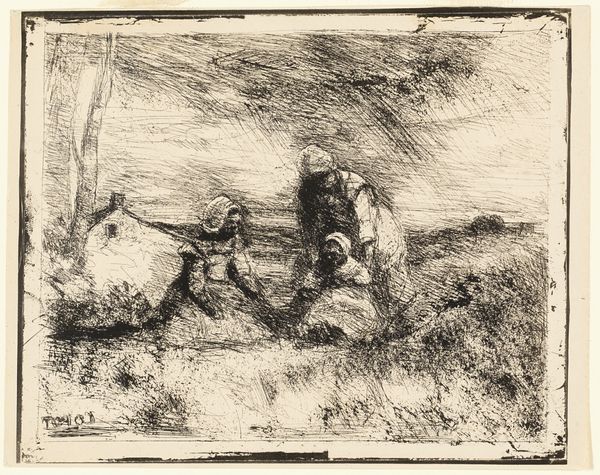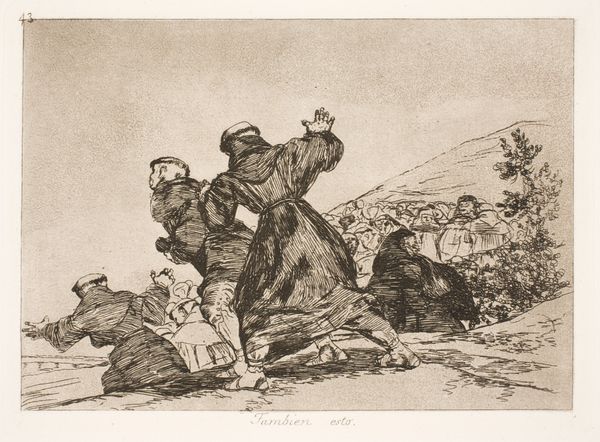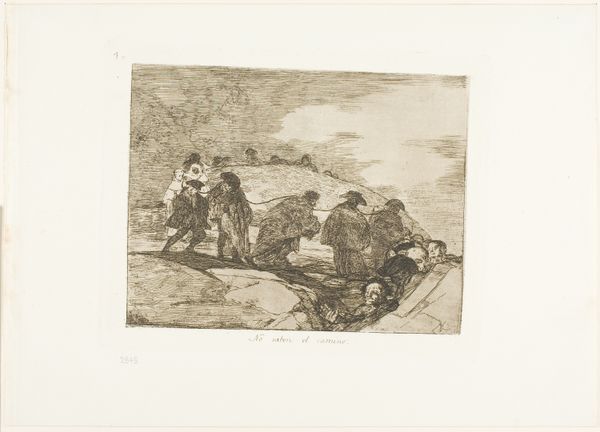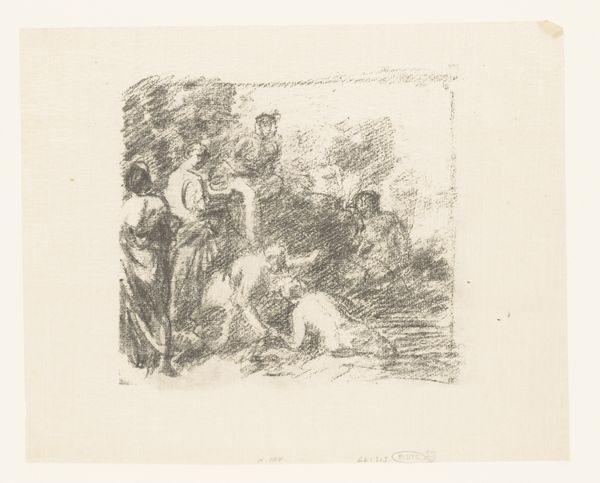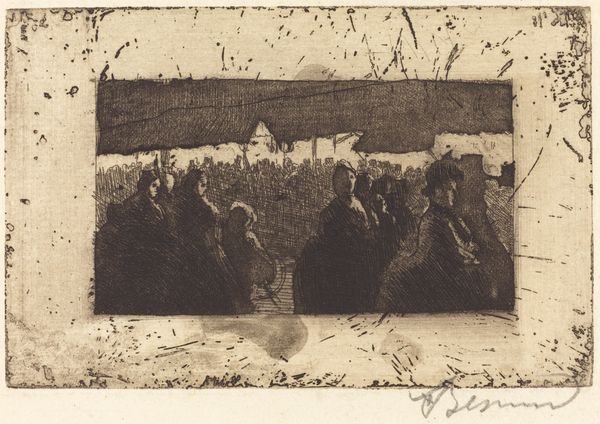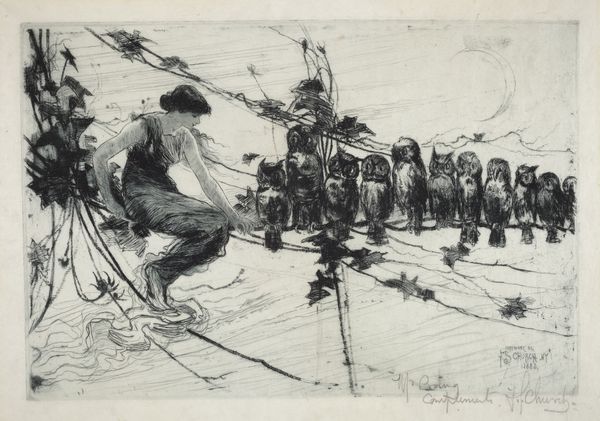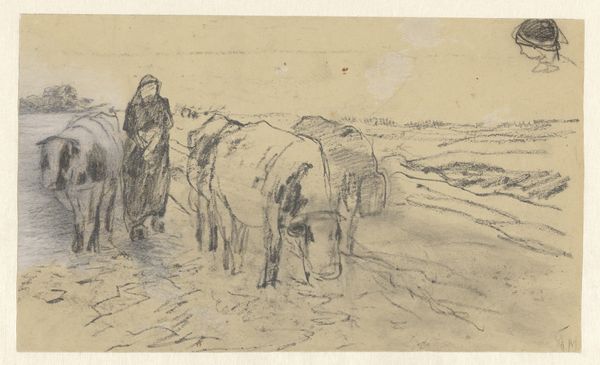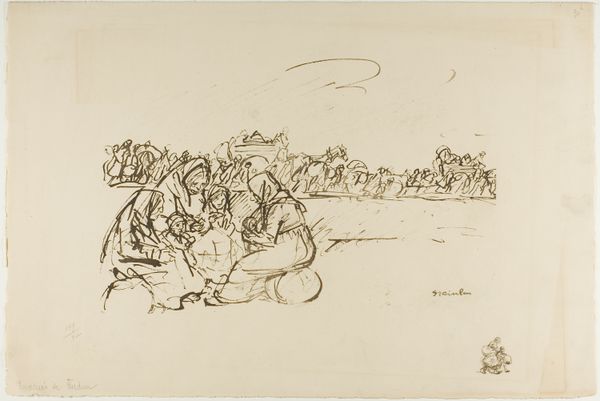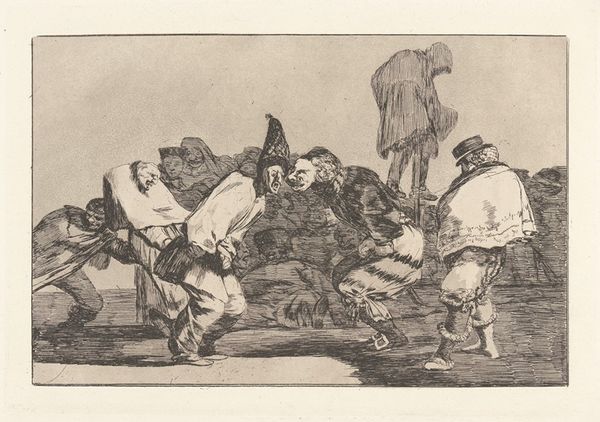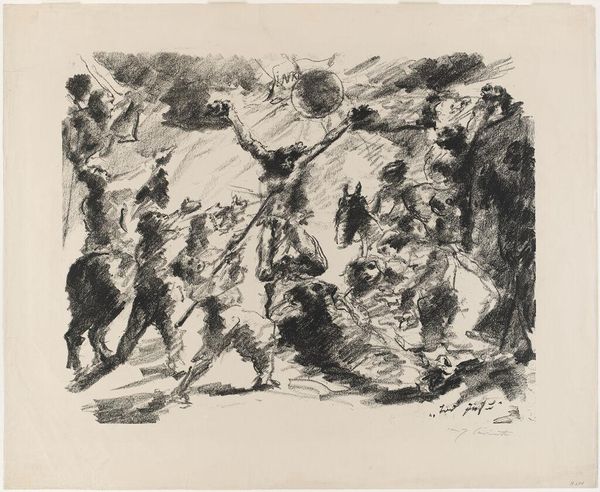
drawing, ink
#
drawing
#
war
#
landscape
#
figuration
#
ink
#
group-portraits
#
expressionism
#
realism
Dimensions: height 268 mm, width 368 mm
Copyright: Rijks Museum: Open Domain
Curator: What we're looking at is a 1918 ink drawing titled "Frische frohliche Krieg," or "Fresh Cheerful War," by Willem van Schaik. I wonder what that title implies about what’s going on here. Editor: Well, "fresh" and "cheerful" certainly aren't the first words that come to mind. I'm seeing weariness etched into these figures. The monochromatic palette and frantic cross-hatching give the piece a stark, desolate feeling. It’s anything but fresh, really. Curator: I agree. It feels heavy, almost oppressive. Maybe Van Schaik intended a bitter irony with that title? The figures seem huddled together in a bleak landscape, rifles beside them – suggesting a temporary respite in some conflict. Their postures—slumped, heads bowed—speak of exhaustion and resignation. Editor: Irony seems likely, especially considering the context of 1918. The war’s end was in sight, but after immense suffering. These figures, perhaps peasant women turned soldiers or auxiliary forces, are framed against what seems a typical pastoral landscape, a style that here becomes indictment of a world turned upside down. Curator: Right, a real break from typical realism—Van Schaik manages to use these combined styles to create an expressive portrait of a collective experience, don't you think? And that level of expressivity gives a disturbing energy to it. You see this gathering of anonymous figures who have endured so much they can barely acknowledge one another anymore. It's haunting. Editor: Absolutely. There’s also something about the scale that enhances that feeling. As a drawing, it pulls us in close to their silent grief, away from grand narratives of heroism or victory. The lack of color concentrates everything into this powerful contrast between light and shadow. I keep wondering, who are these women, and what's become of them after this pause in hostilities? Curator: That’s it exactly, isn't it? Van Schaik avoids sentimentalizing their experience, forcing us to confront the stark reality of war's impact on ordinary lives. A stark, visual reckoning... Editor: Yes, this artwork has definitely shifted my understanding of this period. The women were not passive in war. They’re here— exhausted, grieving, maybe forever changed, but visible. Curator: Exactly. Now I am not sure I will hear the word fresh the same way ever again!
Comments
No comments
Be the first to comment and join the conversation on the ultimate creative platform.
